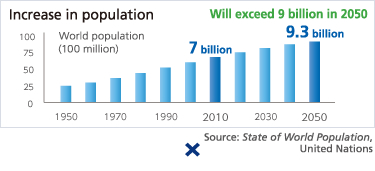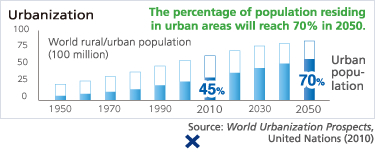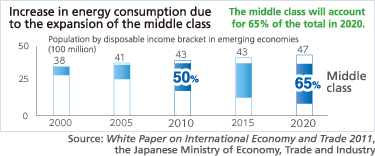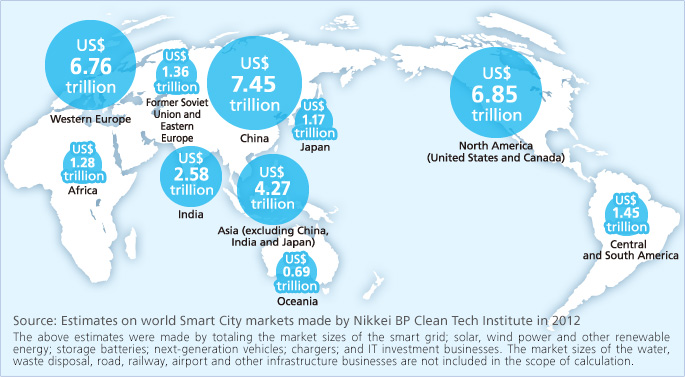Surge in Energy Consumption
The world’s population exceeded 7 billion in 2011 and is predicted to be more than 9.3 billion in 2050. There is also a serious problem concerning urbanization: as a result of the increasing inflow of people to cities, the percentage of population residing in urban areas will rise to 70% in 2050. Moreover, in emerging economies energy consumption will swell due to the expansion of the middle class. Against this backdrop, it is feared that the world will see an explosive increase in energy consumption.
By 2030, the market size will reach a cumulative total of about US$ 42.72 trillion.
Increases in energy consumption are resulting in increases in CO2 emissions, making it necessary to build an environment-friendly, low-carbon city called a “Smart City.”The size of the world’s Smart City market is expected to reach a cumulative total of as much as US$ 42.72 trillion over the 20 years from 2010 to 2030, and each country regards the development of the domestic Smart City industry as a highest priority in its national strategies.





